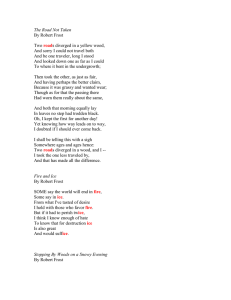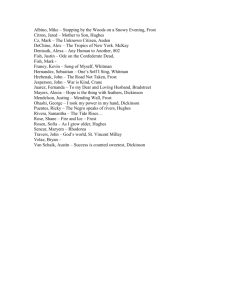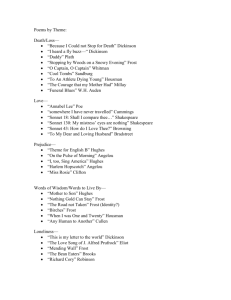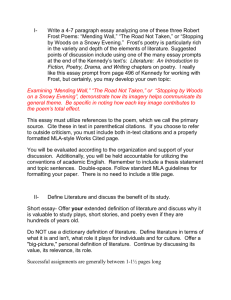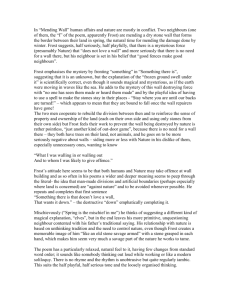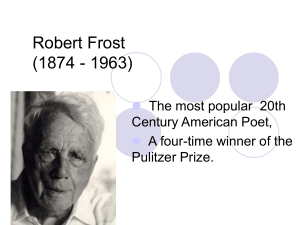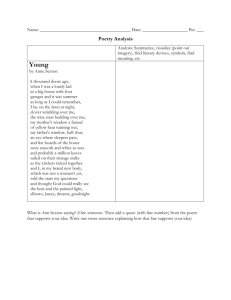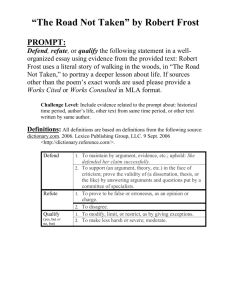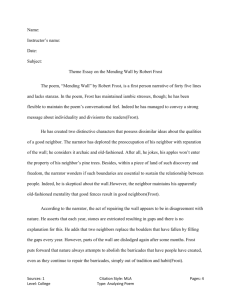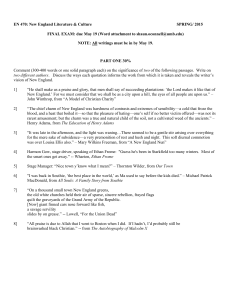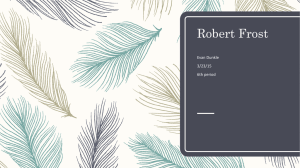Song of the Open Road / The Road Not Taken
advertisement
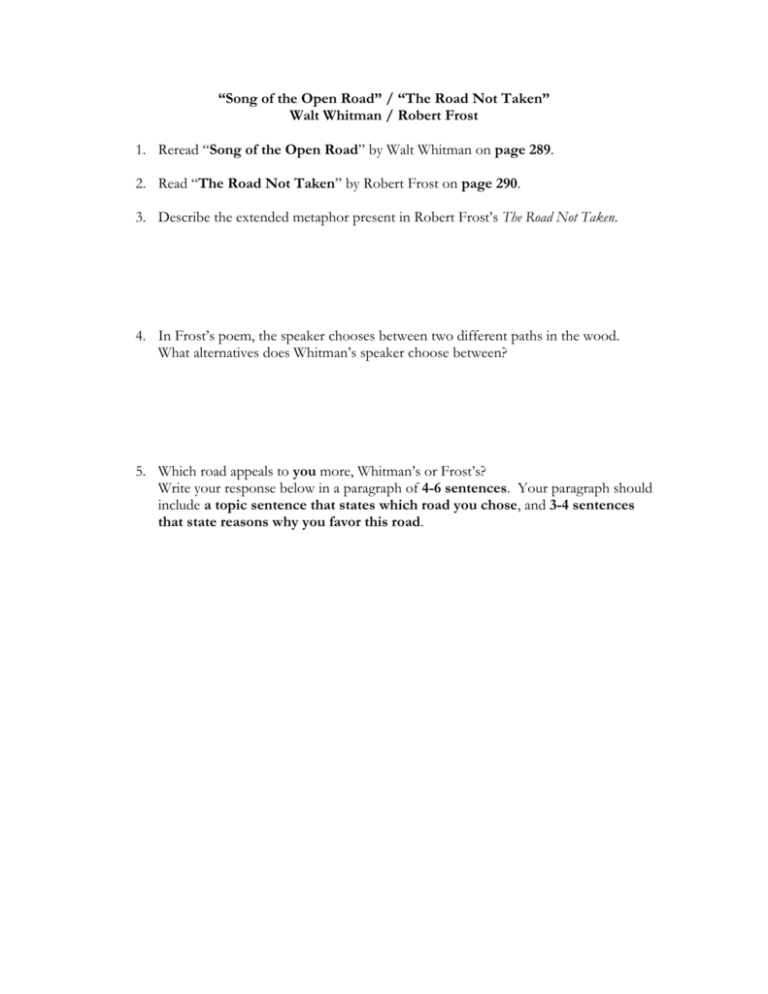
“Song of the Open Road” / “The Road Not Taken” Walt Whitman / Robert Frost 1. Reread “Song of the Open Road” by Walt Whitman on page 289. 2. Read “The Road Not Taken” by Robert Frost on page 290. 3. Describe the extended metaphor present in Robert Frost’s The Road Not Taken. 4. In Frost’s poem, the speaker chooses between two different paths in the wood. What alternatives does Whitman’s speaker choose between? 5. Which road appeals to you more, Whitman’s or Frost’s? Write your response below in a paragraph of 4-6 sentences. Your paragraph should include a topic sentence that states which road you chose, and 3-4 sentences that state reasons why you favor this road. “Stopping By Woods on a Snowy Evening” Robert Frost Whose woods these are I think I know. His house is in the village, though; He will not see me stopping here To watch his woods fill up with snow. My little horse must think it queer To stop without a farmhouse near Between the woods and frozen lake The darkest evening of the year. He gives his harness bells a shake To ask if there is some mistake. The only other sound's the sweep Of easy wind and downy flake. The woods are lovely, dark, and deep, But I have promises to keep, And miles to go before I sleep, And miles to go before I sleep. In the above poem, consider the use of sound devices. Make note of any examples of the following devices you see: Alliteration Assonance Refrain Rhyme (end, internal) Describe the types of imagery present in Frost’s poem, looking for examples of visual and auditory imagery. List any examples you find in the space below:

